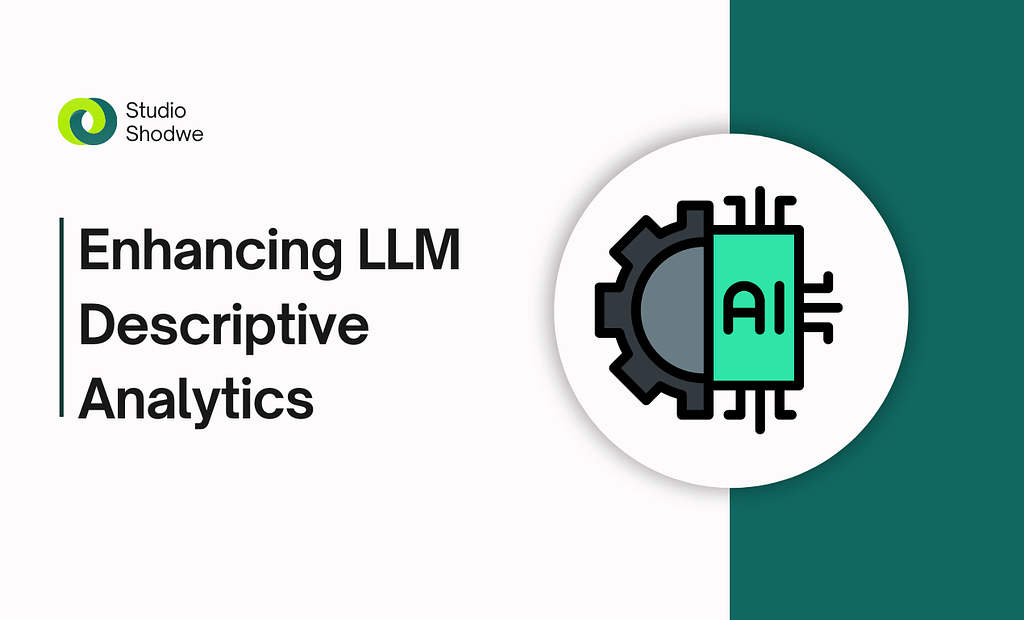Enhancing LLM Descriptive Analytics-Based Business Intelligence Dashboards


In today’s data-driven world, businesses are continually seeking ways to derive actionable insights from their data to make informed decisions. Business Intelligence (BI) dashboards have been instrumental in visualizing data and providing at-a-glance views of key performance indicators (KPIs). However, the integration of Large Language Models (LLMs) and descriptive analytics is revolutionizing how these dashboards operate, making them more interactive, insightful, and user-friendly.
Understanding LLM Descriptive Analytics
Large Language Models (LLMs), such as OpenAI’s GPT-4, are advanced AI systems capable of understanding and generating human-like text based on vast amounts of data. Descriptive analytics, on the other hand, involves summarizing historical data to identify patterns and trends. When combined, LLMs and descriptive analytics can transform BI dashboards by enhancing data interpretation and interaction.
Benefits of Integrating LLM Descriptive Analytics into BI Dashboards
- Enhanced Data Interpretation:
- Natural Language Summaries: LLMs can generate natural language summaries of complex data sets, making it easier for users to understand trends and patterns without deep technical knowledge.
- Contextual Insights: These models can provide contextual explanations for data anomalies, trends, or significant changes, offering deeper insights beyond what traditional dashboards can offer.
- Improved User Interaction:
- Conversational Interfaces: Users can interact with dashboards using natural language queries, making data exploration more intuitive and accessible.
- Personalized Recommendations: LLMs can analyze user behavior and preferences to offer personalized insights and recommendations, enhancing the user experience.
- Streamlined Reporting:
- Automated Reports: LLMs can automate the creation of detailed reports based on dashboard data, saving time and reducing the risk of human error.
- Real-time Updates: As new data is ingested, LLMs can provide real-time updates and interpretations, ensuring that users always have access to the most current information.
Table of Contents
Key Components of LLM-Enhanced BI Dashboards
To effectively integrate LLM descriptive analytics into BI dashboards, several key components must be considered:
- Unified Data Sources: Ensure that data from various sources is seamlessly integrated and managed within the dashboard to provide a comprehensive view.
- Data Quality: Maintain high data quality standards to ensure the accuracy and reliability of insights generated by LLMs.
- LLM Integration:
- API Integration: Utilize APIs to integrate LLMs with BI platforms, enabling real-time data processing and analysis.
- Model Training and Tuning: Continuously train and tune LLMs with relevant data to improve their accuracy and relevance in generating insights.
- User Interface Design:
- Intuitive Design: Design the dashboard interface to be intuitive and user-friendly, allowing users to easily interact with and interpret the data.
- Interactive Elements: Incorporate interactive elements such as chatbots or voice assistants powered by LLMs to facilitate natural language interactions.
- Security and Privacy:
- Data Security: Implement robust security measures to protect sensitive data and ensure compliance with relevant regulations.
- User Privacy: Ensure that user interactions with the dashboard are secure and that personal information is protected.
Practical Applications of LLM-Enhanced BI Dashboards
- Sales and Marketing:
- Customer Insights: Use LLMs to analyze customer data and generate insights into purchasing behavior, preferences, and trends.
- Campaign Performance: Evaluate marketing campaign performance and provide recommendations for optimization.
- Finance:
- Financial Analysis: Summarize financial data, highlight trends, and provide explanations for variances in performance metrics.
- Risk Management: Identify and explain potential risks based on historical data and predictive models.
- Operations:
- Supply Chain Management: Monitor and analyze supply chain data to identify bottlenecks and optimize processes.
- Inventory Management: Provide insights into inventory levels, demand forecasts, and reorder points.
- Human Resources:
- Employee Performance: Analyze employee performance data and generate reports on productivity, engagement, and development needs.
- Recruitment Analytics: Provide insights into recruitment metrics and recommend strategies for talent acquisition.
Steps to Implement LLM Descriptive Analytics in BI Dashboards
- Identify Objectives:
- Clearly define the objectives and goals of integrating LLM descriptive analytics into your BI dashboards.
- Select the Right Tools:
- Choose BI platforms and LLMs that best fit your organization’s needs and technical capabilities.
- Develop a Data Strategy:
- Create a comprehensive data strategy that includes data collection, integration, management, and quality assurance.
- Build and Train Models:
- Develop and train LLMs using relevant historical data to ensure they can accurately generate insights.
- Design the Dashboard:
- Design an intuitive and interactive dashboard interface that leverages LLM capabilities for enhanced data interpretation.
- Test and Iterate:
- Conduct thorough testing to ensure the accuracy and reliability of the dashboard and its insights. Continuously iterate based on user feedback and performance metrics.
- Deploy and Monitor:
- Deploy the dashboard and continuously monitor its performance, making adjustments as necessary to improve functionality and user experience.
Conclusion
The integration of LLM descriptive analytics into business intelligence dashboards represents a significant advancement in how organizations can leverage data. By enhancing data interpretation, improving user interaction, and streamlining reporting processes, LLMs can transform traditional BI dashboards into powerful, interactive tools that provide deeper insights and drive better decision-making. As businesses continue to navigate the complexities of the digital age, embracing these technologies will be crucial for maintaining a competitive edge and achieving long-term success.
Hello,
for your website do be displayed in searches your domain needs to be indexed in the Google Search Index.
To add your domain to Google Search Index now, please visit
https://searchregister.info/